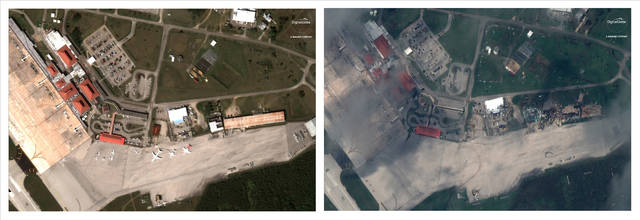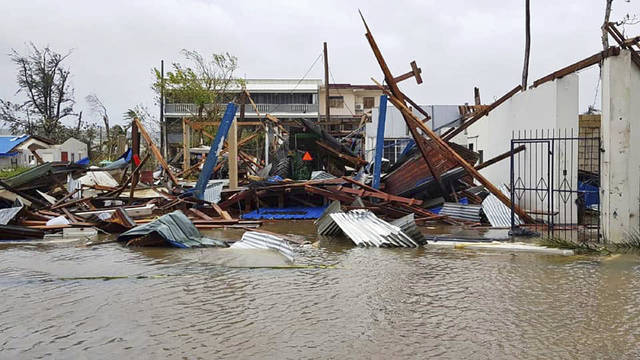Many people in a U.S. Pacific territory ravaged by a deadly super typhoon lost everything, but residents say they are resilient and must focus on the long recovery ahead.
The U.S. government is sending supplies to the Northern Marianas as residents dig through crumbled houses, smashed cars and fallen utility poles after Super Typhoon Yutu struck Thursday as a Category 5 storm.
“The rebuilding of this island is beginning already as time waits for nobody,” Jan Reyes, who lives on the territory’s most populated island of Saipan, wrote in an email to The Associated Press. “Despite the casualties, we the people of the Commonwealth of the Northern Mariana Islands are resilient people.”
To help the recovery, military planes brought in food, water, tarps and other supplies.
U.S. Federal Emergency Management Agency spokesman David Gervino said the agency is focused on helping restore power, opening sea and air ports, and ensuring cellphone towers can operate on emergency power until electricity returns.
Super Typhoon Yutu packed maximum sustained winds of 180 mph (290 kph) as it passed over the islands of Tinian and Saipan, the National Weather Service said. By Saturday, power was still out across Saipan, with 50,000 residents, and Tinian, with 3,000 people.
The strongest storm to hit any part of the United States this year overturned cars, crushed small planes, ripped off roofs and killed a woman who took shelter in an abandoned building that collapsed. Others were injured, including three people who needed surgery.
Many homes were destroyed because some families can’t afford concrete homes that conform to building codes meant to withstand typhoon winds, said Edwin Propst, a member of the territory’s House of Representatives.
Some people build houses with concrete foundations and walls but the structures have wooden or tin roofs.
Reyes and her family lost everything.
“Everything my family and I have bought and added to our home over 13 years laid on the flooded floor as every window in our house shattered,” Reyes wrote.
A cousin was trapped under debris for seven hours, Reyes said.
Her family rode out the storm in a hotel room, overturning a bed to create a barricade against the wind, rain and debris. When the worst passed, she said it took half an hour to navigate fallen poles and trees for what would normally be a five-minute drive to their home.
“The foundation of our culture is selflessness and family values, and this is what has always helped us get through hard times,” she wrote. “We will always remain hopeful and prepared for the worst. This is our way of life.”
Michelle Francis hid in a closet while the storm destroyed her Saipan house, saying in a Facebook message that many people lost their homes and belongings. “Now everyone is trying to stand strong, have faith.”
People in the islands are used to riding out monster storms, but many said Yutu was the worst they have experienced.
Because of severe weather, people “listen to warnings from local officials, they take shelter when directed to do so, they stock up on supplies in advance of the storm,” Gervino said.
The territory’s only hospital, in Saipan, said it saw 133 people in its emergency room Thursday, and three patients had severe injuries that needed surgery.
Gregorio Kilili Camacho Sablan, the territory’s delegate to Congress, said residents will need major help to recover.
FEMA has 220,000 liters of water and 260,000 meals stored on Guam for shipment to the Northern Marianas, a half-hour plane ride away.
FEMA made changes after Hurricane Maria, a Category 5 storm that struck Puerto Rico last year, creating task forces to tackle those needs.
Commercial flights won’t be operating for some time due to airport damage, said Nadine Deleon Guerrero, a spokeswoman for the territory’s emergency management department.
More than 800 people were in shelters across the islands, and space was running out, officials said.
Saipan is a popular tourist destination for visitors from China and South Korea, just a few hours away by plane. Some 650,000 tourists visited in the 2017 fiscal year, according to the Marianas Visitors Authority.
———
McAvoy and Kelleher reported from Honolulu. Associated Press journalist Caleb Jones in Honolulu contributed to this report.




